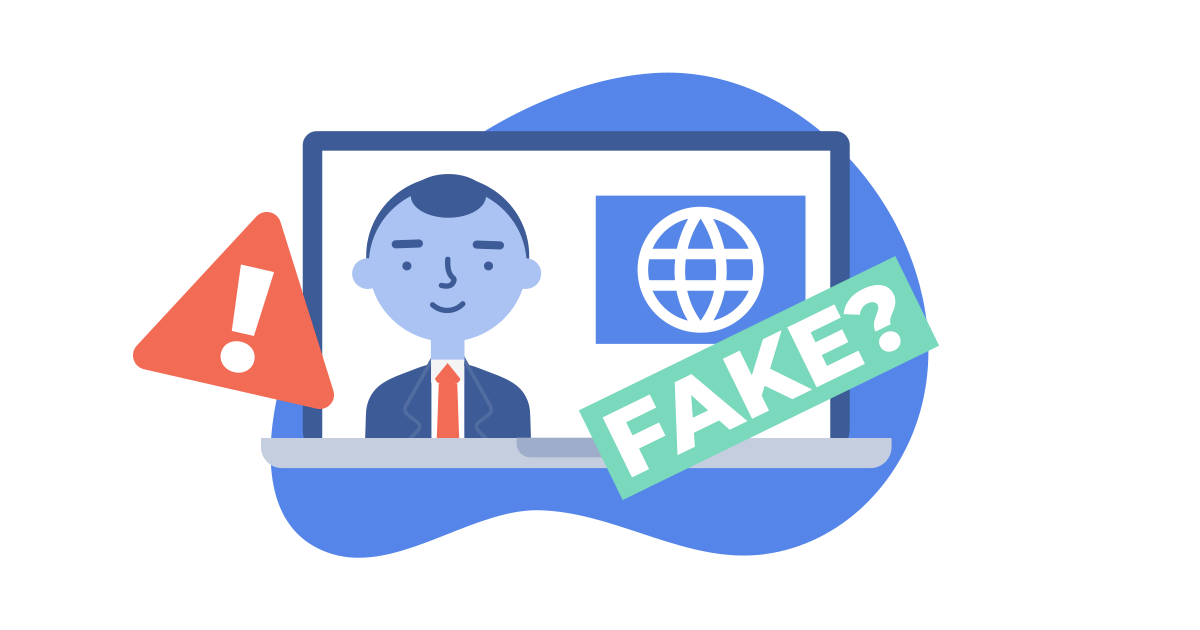Spotting fake news
Advice for Parents and Carers
Learn more about what fake news is and how to spot it to help your child think critically about what they see online and improve their media literacy skills.

Fake news is the spreading of news stories online that are invented, distort the facts, or are not news at all, but made to look as if they are.
Fake news stories use technology and social media to look like proper news sites. Organisations and political groups may target you with ads that look like the news. While hackers use bots, bits of software, to create multiple social media accounts and use those to spread disinformation. This can make a fake story seem real simply because it looks like it has been shared by so many people.
Social media and fake news
Fake social media posts and accounts help fake news to go viral. Sometimes this is then reported as fact by real journalists. When fake news becomes the news the line between fact and fiction becomes blurred.
Fake news presents strong, often prejudiced opinions, as fact. It can also direct these opinions to those most likely to agree reinforcing them. Hackers buy your data and use it to make sure that the news arriving in your social media feed matches your world-view. This so called “echo-chamber” effect is made worse by algorithms, clever bits of software, which encourage you to read material similar what you are already sharing. Hackers often hack or manipulate these algorithms.

How you can support your child
Get practical tips to empower your child to recognise what fake news is and how to stop the spread of it.
Fake news is promoted by hackers, politicians, trolls, ad agencies, even governments, all of whom are net-savvy. This means it comes in many shapes and sizes making it harder to spot. Look out for:
- Fake Papers: They look like traditional newspapers online, but are not
- Click-baiters: Organised groups of hackers making up stories for money
- Bad Ads: Targeted ads that look like news
- Hackers and Bots: Fake social media accounts spreading fake news.
- Headliners: Unbelievable headlines designed to get you to spread the story without reading it
- Populists: Politicians willing to use fake news stories to gain popular support
We will create this as a visual asset to illustrate it and make is stand out on the page
The internet has immense potential to change the world for the better and our digitally-native children will be the generation that drives this change. Teachers report their students to be better informed on issues of disinformation than we give them credit for. They already have what experts calls basic critical digital literacy.
Critical digital literacy means being careful about what you read, share and write online. There are various different ways suggested to improve digital literacy.
- Read It
- Check It
- Wait
Read It: Headlines are often misleading so make sure you read the whole story.
Check It: Anyone can present themselves as a news source these days, but it is not hard to check online and see if they really are. There are also numerous fact-checking sites. Use one if you have doubts.
Wait: If anything appears fishy about the post don’t share it. There’s no shortage of stuff out there to share. If you still like the story, give it a couple of days and see what other people think.
Talk about the possible impact of spending too much time online and agree on sensible ‘bed-times’ and breaks during the day. Create opportunities as a family to get ‘off-line’ and have fun together.
While fake news has been blamed for influencing the vote in recent referenda and elections, so far there is little evidence that this is true. Yet the impact of our concern about fake news on our school children is very real.
More than half of 12-15 year-olds go to social media as their regular source of news. And while only a third believe that social media stories are truthful, it is estimated that half of the children asked admitted being worried about fake news. Teachers surveyed on the matter noted a real increase in issues of anxiety, self-esteem, and a general skewing of world views. More generally the trust children have in the news, social media interactions, and politicians is weakening.
Some fake stories can have a real impact on the lives of our children. The so-called “Anti-vaxxers” movement and the recent fake Momo scare are both examples of different ways that fake news preys on our emotions and those of our children.
Children interviewed express a concern that when online they don’t know who to trust, what is real, and which forms of knowledge are true. Nearly all children are now online, but many of them are not emotionally equipped to deal with the challenges of a fake news online culture. We cannot stop our kids using the internet nor should we, it is an incredible resource. It is important then that we teach them some basic rules so they can feel confident in the facts they find online.
Do you have a link to the source of the stats that you’ve quoted? It would be good to call out top 3 stats that will summarise, the scale of the issue, children’s understanding of the issue and parents concerns around the issue. Do you think you could supply that?
It may feel at times that you have already lost your kids to their phones and tablets but this is not the case. Surveys shows that 12-15 year olds rely as much on their friends and family as they do social media for their news. Twice as many said they trust friends and family to be truthful over social media. Parents have an important role to play in helping their children develop digital resilience.
You and your kids can improve your digital literacy together. Turn your house into a mini social media platform where you get together and chat about what is going on in the world. Simple things can help, like discussing the difference between fact and opinion, perhaps to solve an argument between your kids. When you experience things like a targeted ad or a click-bait headline, share it with your kids as an example of fake news.
In part due to fake news, our children suffer from a lack of confidence when it comes to challenging the truthfulness of a piece of information. Rather than telling them something they read online is wrong, encourage them to check the piece themselves.
Social media has created a new kind of ‘digital literacy’. Digital literacy is not just reading stuff online, but sharing it, discussing it and posting content yourself. This ‘participatory culture’ is something we can embrace as parents to manage the impact of disinformation.
You can’t stop your kids being online so encourage them to be good citizens, calling out fake news, being positive in their online comments and creating great content themselves.
If we can empower our children to be active online participants online, not just passive sharers, then we can vaccinated them against the virus of disinformation.
